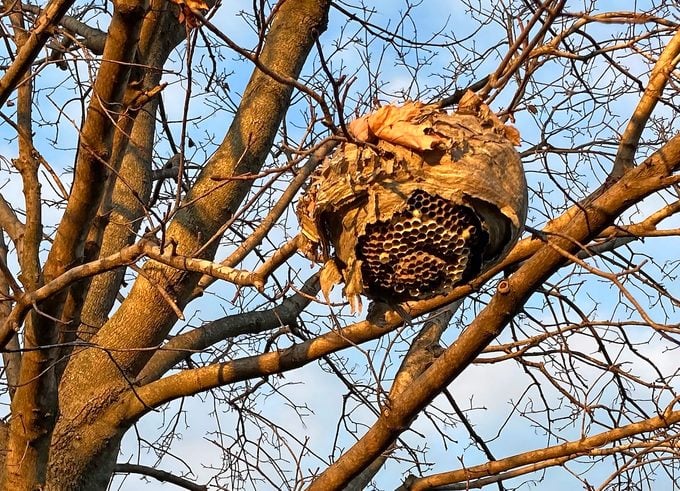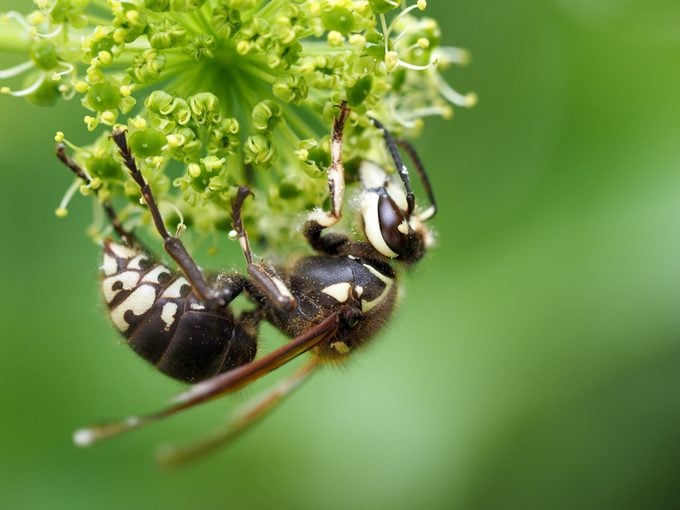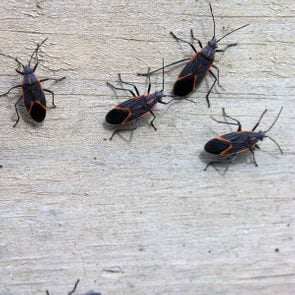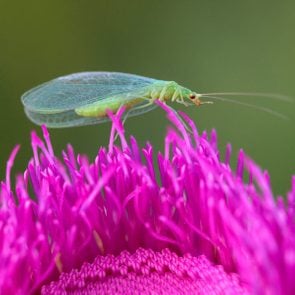What to Do if You See a Bald-Faced Hornet Nest
Updated: Jan. 24, 2023
Learn to identify a bald-faced hornet nest and see what the insects look like. Find out what to do if you see this type of nest in your yard.
What Does a Bald-Faced Hornet Nest Look Like?

“What kind of hive is in my tree,” asks Birds & Blooms reader Caren Holderman of Kankakee, Illinois.
Kenn and Kimberly Kaufman: Several kinds of wasps and hornets build nests of paper, creating the paper by chewing up wood, mixing it with their saliva, then forming it into the structure of the nest. In your area, one with this shape was probably built by bald-faced hornets (Dolichovespula maculata). Bald-faced hornet nests are only used for one season. This is an older one that’s starting to fall apart, revealing the numerous cells in which the hornets raised their larvae. If you find an active nest, it’s best to stay away from it. Seek professional assistance if it’s in an area with a lot of foot traffic. These busy insects can be aggressive in defending their home.
Learn 6 key differences between bees and wasps.
Bald-Faced Hornets Are Social Wasps

According to Penn State University Extension, bald-faced hornets are not “true” hornets; they are actually yellow jackets. All species in the genus Dolichovespula build these big, gray “football shaped” nests. They’re often easier to spot in winter after leaves fall off of the trees.
Bald-faced hornets live throughout most of the United States, including Alaska, and also in Canada. It’s likely you have them flying through your neighborhood.
To identify these insects, look for distinctive white markings on their face, thorax, legs and abdomen.
Yellow jackets (a type of social wasp) are predators that feed on many insects. They also like sugar and may visit hummingbird and jelly feeders, especially in the fall, when their numbers are at their highest. Social wasps build large nests and are willing to aggressively defend them. There is one reproductive individual and hundreds of female “workers.”
Next, learn how to get rid of wasp nests in birdhouses without pesticides and keep bees and wasps away from hummingbird feeders.























